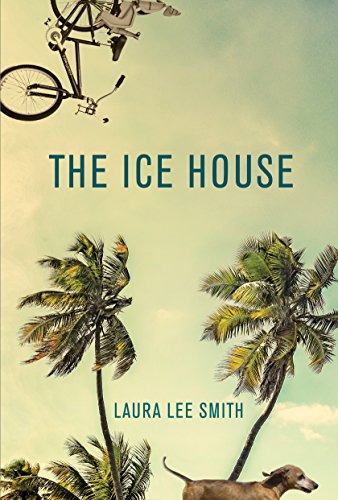
“In Florida, silence was a porous thing, damp and fragile, never quite solidified. Always there was sound, somewhere. Cicadas whirring, a rustle of palmettos, rumble of afternoon thunderheads. Pecans dropping through the canopy. Mosquitoes buzzing at earlobes. In Scotland, out in the country, the silence was dry, hardened, complete. It was a silence so absolute it was almost deafening, softened only now and again by a cold wind cutting through wide yellow fields of oilseed rape. Johnny always felt that the silence in Scotland was older, perhaps wiser. Florida quiet was restless, wild, as unrestrained and lightsome as a bobcat cub.” (pp. 172-173). Kindle Edition.
This story takes place in Jacksonville, Florida, and Loch Linnhe, Scotland. Johnny MacKinnon and his wife Pauline run an ice factory in Jacksonville that had belonged to Pauline’s father, Packy Knight. Pauline is the CEO, and Johnny is the COO. Pauline has renamed the ice making and distribution company Bold City Ice. We find out early in the story that the company has an ongoing OSHA investigation because of an ammonia tank rupture. The MacKinnons have hired a well-known law firm to defend them. They try to prove that the tank was not in disrepair but that Leonard, a neighbor in the Little Silver neighborhood where the factory is located, illegally scaled the fence and used the anhydrous ammonia to make meth.
As the investigation is heating up and the MacKinnons are preparing their defense, Johnny is diagnosed with a brain cyst that could be a tumor, and he needs brain surgery. The doctor orders him to stay home and rest. In anticipation of a dire outcome, Johnny decides to visit his son Corran, who lives with his first wife, Sharon, in Scotland. Corran is a heroin addict, and the last time he visited Johnny in Florida, they parted on bad terms with Johnny, saying that he wanted Corran out of his life. Of course, the doctor is not aware of this plan, and Pauline is not happy that her husband is both risking his life and leaving her alone to run Bold City Ice and deal with the OSHA issue.
Since Johnny cannot drive, he hires a teenaged neighbor, Chemal, to drive him around Jacksonville and then decides to bring him along to Scotland to act as his chauffeur from the airport to Sharon’s house and then to visit Corran in a more remote part of Scotland, Loch Linnhe. Chemal is a charming character who is probably on the autism spectrum since he struggles with prosody and communication issues. I was interested in how the author showed Johnny interacting with Chemal, sometimes more patiently than he did with his own son, Carron. Johnny was a memorable protagonist overall. He wasn’t necessarily insightful about his communication style. Still, we got to see him interact with his wife, ex-wife, her husband, the two youngsters in the story, and the doctors and workers in the ice factory. His methods for navigating relationships provide much material for reflection and discussion.
I was not impressed with the way Smith portrayed women in this book. Pauline, the CEO is not a strong female leader; she seems more interested in traditional and trite female issues than improving and saving the company. Claire, a member of the administrative team of Bold City Ice, is competent but has difficulty separating her business life from her personal life. Sharon is a bit stronger as a character, but she enables her son and is a little bit too complacent about her dealings with Johnny. I think that Smith did a good job getting readers to sympathize with characters with disabilities since she included Chemal and a doctor who is in a wheelchair. Also, Carron’s character and chemical dependence are handled with sensitivity, allowing the reader to see addiction as a disease. Of course, Carron’s addiction and the addictions of people in the working-class area of the ice factory are viewed differently, and class differences are an important theme in the book.
The Ice House of the title refers not only to the physical ice factory that is central to the plot but also to the metaphorical iciness of the homes described in the narrative. Pauline avoids her father, and we learn some poignant tales about his interactions with the working-class members of the Jacksonville neighborhood when he ran the ice factory, which was then known as Knight’s Ice. What we know about Claire and Roy, other members of the management team, also speak to this theme of icy home relations. Chemal comes from a dysfunctional family that hardly cares about his well-being and whereabouts. At Corran’s house in Loch Linnhe, Scotland, there is lots of physical ice that figures prominently into the story, and the icy discourse among the characters is paramount to the story.


